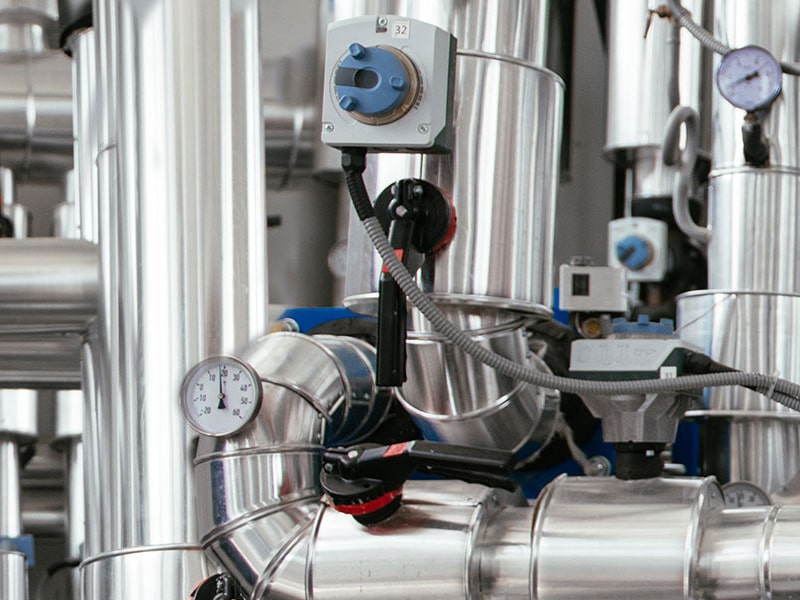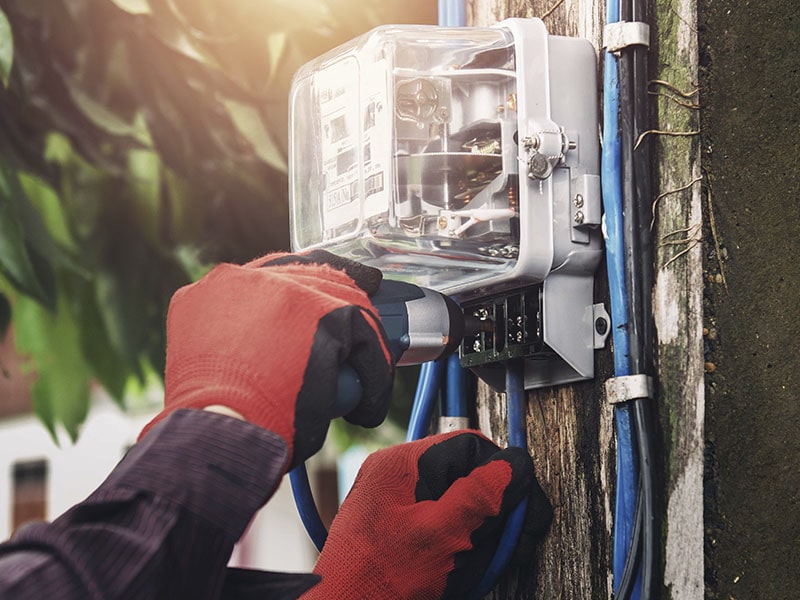Smart meters are intelligent electricity metering systems. That such a thing exists should not surprise anyone. And why should theelectricity grid be an exception in the context of nationwide digitalization? Surprisingly, the reality looks somewhat different. This article is about the advantages of using smart meters, how they work and the reasons why the digitalization of the electricity supply is progressing only slowly.
Smart meters and digital electricity meters
A digital electricity meter alone, also referred to as a modern measuring device in political jargon, is not yet a smart meter. Only when it is connected to a communication module does a modern measuring device become an intelligent measuring system. Values can thus be read, transmitted and, above all, analysed automatically. The electricity customer can then conveniently keep track of his consumption via app or online portal.
At least that is what the law on the digitalization of the energy turnaround says. The digitization of energy networks is a central prerequisite for the grid integration of renewable energies and electromobility. The energy networks are to be transformed into so-called smart grids – the aim is to network all players in the power supply.
In the long term, smart meters should also help to optimally coordinate power generation and consumption. Electricity from renewable energies and the changed requirements resulting from the increasing use of e-mobility can thus be integrated more efficiently into the supply system.
Smart meters offer many possible uses
Even a digital electricity meter that is not connected to a smart meter gateway offers many new possibilities compared to the classic meter that everyone knows. Because the meter simply counts the consumption, kilowatt hour by kilowatt hour continuously, differences between summer and winter, between Sunday and Monday, between morning and evening are not recorded.
A digital electricity meter, on the other hand, can accurately display electricity consumption over time and store this data for two years. It is also able to identify different consumers by the signals they send to the grid and to allocate their consumption to them. This technology is called non-intrusive load monitoring.
The advantage for private or commercial users is clear: not only do they get a detailed overview of their electricity consumption, they can also take advantage of flexible electricity tariffs, where electricity costs vary throughout the day and there is no need for a system of advance payments combined with refunds or back payments.
If the electricity meter is also integrated into a smart meter gateway, it is then possible to switch devices on or off remotely, depending on whether the electricity is cheaper or more expensive depending on the time of day. Of course the meter can also be read remotely.

How do analogue and intelligent electricity meters work?
The Ferraris meter is a so-called induction motor meter, named after the Italian engineer and physicist Galileo Ferraris. Such an induction motor has a rotatably mounted metal disc that runs through two crossed electromagnets (voltage and current coil). If an alternating current flows through these electromagnets, eddy currents are generated (physically correct spoken, induced) in the metal disc, which together with the magnetic fluxes generate a torque that makes the disc rotate.
In addition, a brake magnet is positioned above the disc. If less current is consumed, the brake magnet compensates the acceleration and keeps the number of revolutions proportional to the current flow. Finally, the disc drives a roller counter, which then displays the consumption.
With the new electronic meters, the entire mechanism including the roller counter is no longer required. This makes the devices less prone to errors, more precise and require less maintenance. The current flow is therefore no longer measured via mechanical components, but via electronic components. These components supply their measured values via an electronic circuit to a digital display, which replaces the well-known roller counter.
Why is the expansion of smart meters proceeding only slowly
Up to now, the legal framework has stipulated that an intelligent electricity meter must be installed in every household by the year 2032 instead of the old, electromechanical meter.
The main reason for the delay is mainly due to the high data security requirements of smart meters. Since the data collected by smart meters reveal a lot about the everyday life and habits of consumers, the law on the operation of measuring points places high security requirements that the account in its test procedure.
In practice, the obligation to install smart meters only takes effect at the moment when three devices from different manufacturers have been certified and are on the market.
Conclusion
Smart meters offer many possibilities due to their extensive and detailed recording of consumption data and thanks to their integration into a communication network. These include a better and device-dependent overview of electricity consumption, variable electricity tariffs and simplified reading and billing.
If a smart grid gradually emerges from the power grid, power generation and power consumption can be better coordinated and, above all, renewable energies and electromobility can be better managed. At present, however, expansion is proceeding slowly, as not enough devices have yet received state approval due to high data security requirements.


